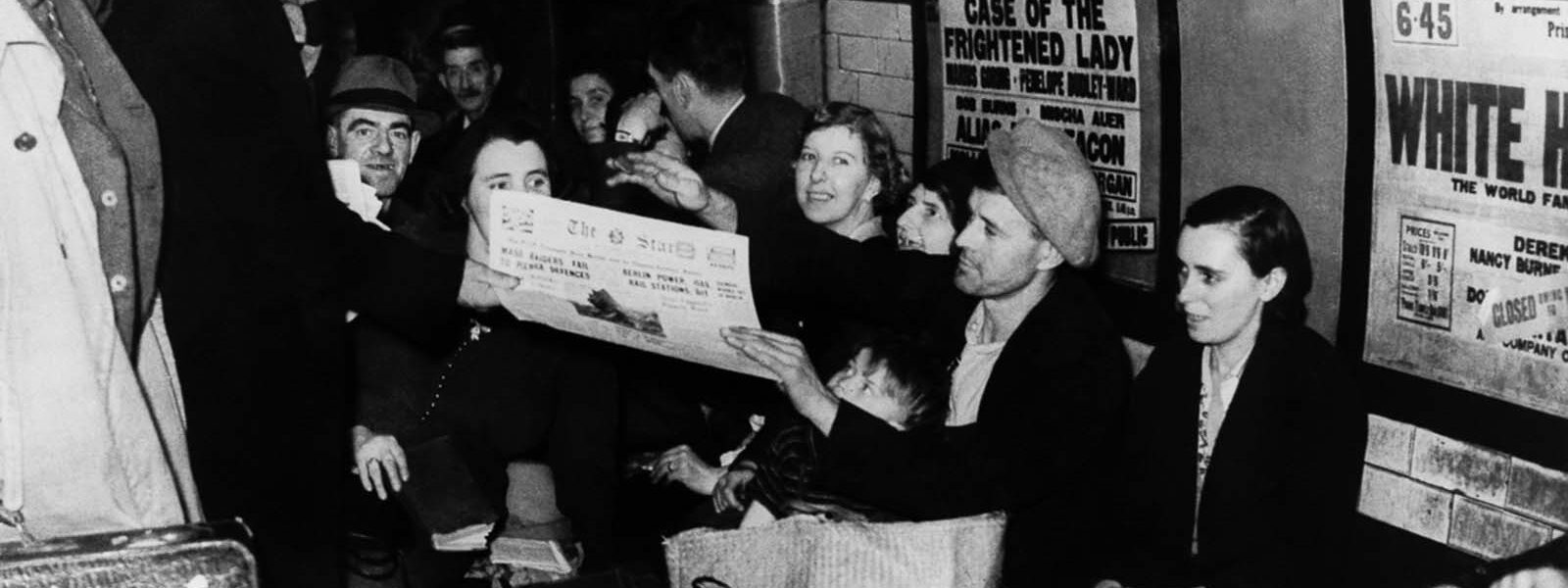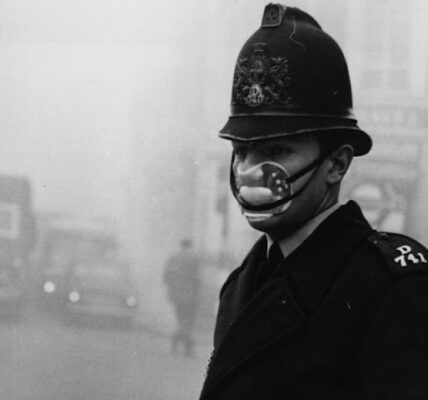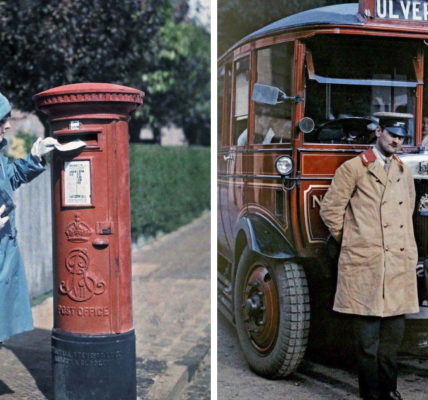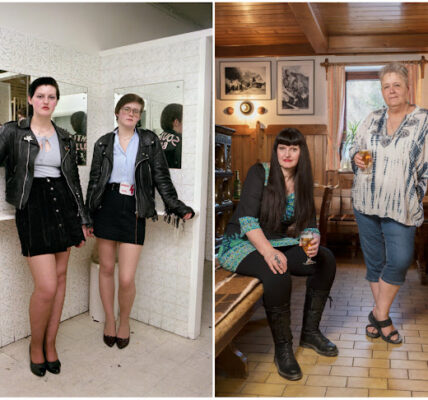During the Second World War, Londoners of all classes flocked to Underground platforms to keep themselves safe from the destruction that was being wrought above the ground by the German bombers.
The Blitz refers to the strategic bombing campaign conducted by the Germans against London and other cities in England from September of 1940 through May of 1941, targeting populated areas, factories, and dockyards.
More than 40,000 civilians were killed by Luftwaffe bombing during the war, almost half of them in the capital, where more than a million houses were destroyed or damaged.
The most important existing communal shelters were the London Underground stations. Although many civilians had used them for shelter during the First World War, the government in 1939 refused to allow the stations to be used as shelters so as not to interfere with commuter and troop travel and the fears that occupants might refuse to leave and continue the war effort.
Underground officials were ordered to lock station entrances during raids but by the second week of heavy bombing, the government relented and ordered the stations to be opened. Each day orderly lines of people queued until 4:00 pm, when they were allowed to enter the stations.
The Daily Herald gives an overview of how popular sheltering on the Underground had become by the end of September: Every night London’s Underground stations are crowded with people seeking shelter. Many of them arrive early in the evening with their bedding prepared to settle down for a night’s sleep on the platforms. Some come from the suburbs and outlying districts.
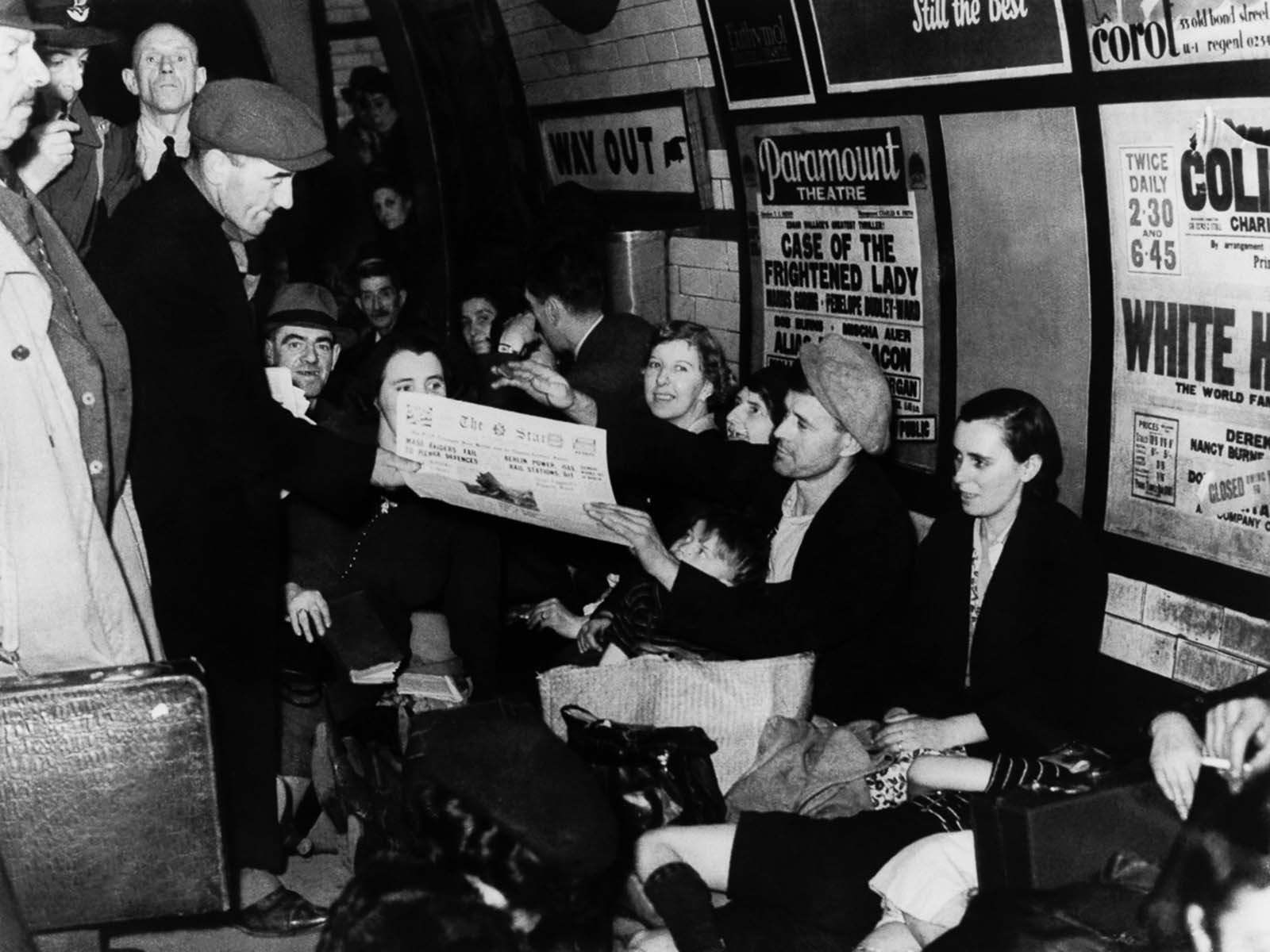
In mid-September 1940, about 150,000 people a night slept in the Underground, although by winter and spring the numbers declined to 100,000 or less. Battle noises were muffled and sleep was easier in the deepest stations but many people were killed from direct hits on stations.
In March 1943, 173 men, women, and children were crushed to death at Bethnal Green tube station in a crowd surge after a woman fell down the steps as she entered the station. A single direct hit on a shelter in Stoke Newington in October 1940 killed 160 civilians.
Peak use of the Underground as shelter was 177,000 on 27 September 1940 and a November 1940 census of London, found that about 4% of residents used the Tube and other large shelters, 9% in public surface shelters and 27% in private home shelters, implying that the remaining 60% of the city stayed at home.
Public demand caused the government in October 1940 to build new deep shelters within the Underground to hold 80,000 people but the period of heaviest bombing had passed before they were finished.
By the end of 1940 improvements had been made in the Underground and in many other large shelters. Authorities provided stoves and bathrooms and canteen trains provided food. Tickets were issued for bunks in large shelters, to reduce the amount of time spent queuing.

Committees quickly formed within shelters as informal governments, and organizations such as the British Red Cross and the Salvation Army worked to improve conditions. Entertainment included concerts, films, plays, and books from local libraries.
Although the intensity of the bombing was not as great as pre-war expectations so an equal comparison is impossible, no psychiatric crisis occurred because of the Blitz even during the period of the greatest bombing of September 1940.
An American witness wrote “By every test and measure I am able to apply, these people are staunch to the bone and won’t quit … the British are stronger and in a better position than they were at its beginning”. People referred to raids as if they were weather, stating that a day was “very blitzy”.
According to Anna Freud and Edward Glover, London civilians surprisingly did not suffer from widespread shell shock, unlike the soldiers in the Dunkirk evacuation.
Although the stress of the war resulted in many anxiety attacks, eating disorders, fatigue, weeping, miscarriages, and other physical and mental ailments, society did not collapse.
The number of suicides and drunkenness declined, and London recorded only about two cases of “bomb neurosis” per week in the first three months of bombing.

Londoners sheltering in the Underground during World War II, 1940-1941
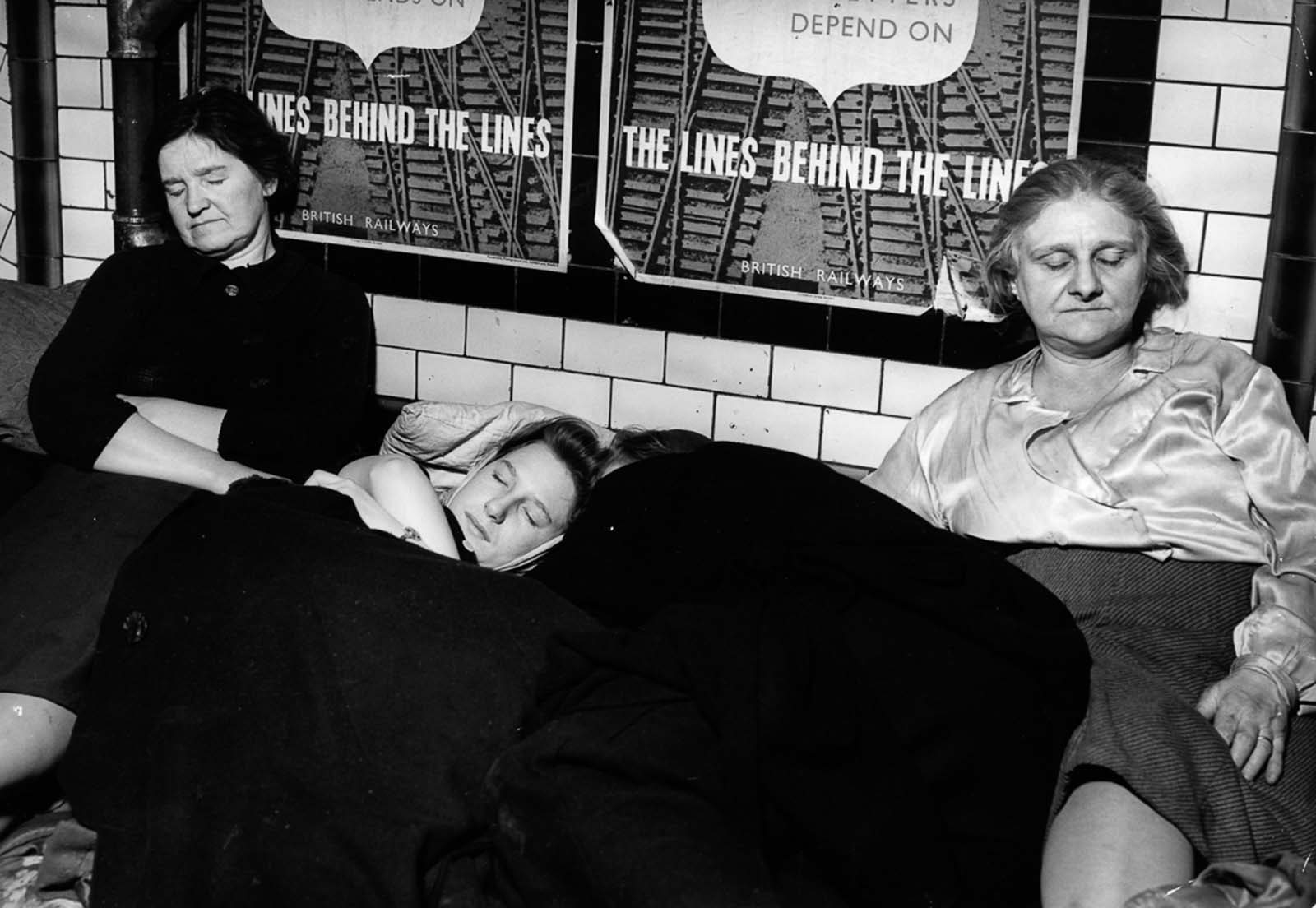
Londoners sheltering in the Underground during World War II, 1940-1941

Performers entertain people taking shelter in the Aldwych underground station.
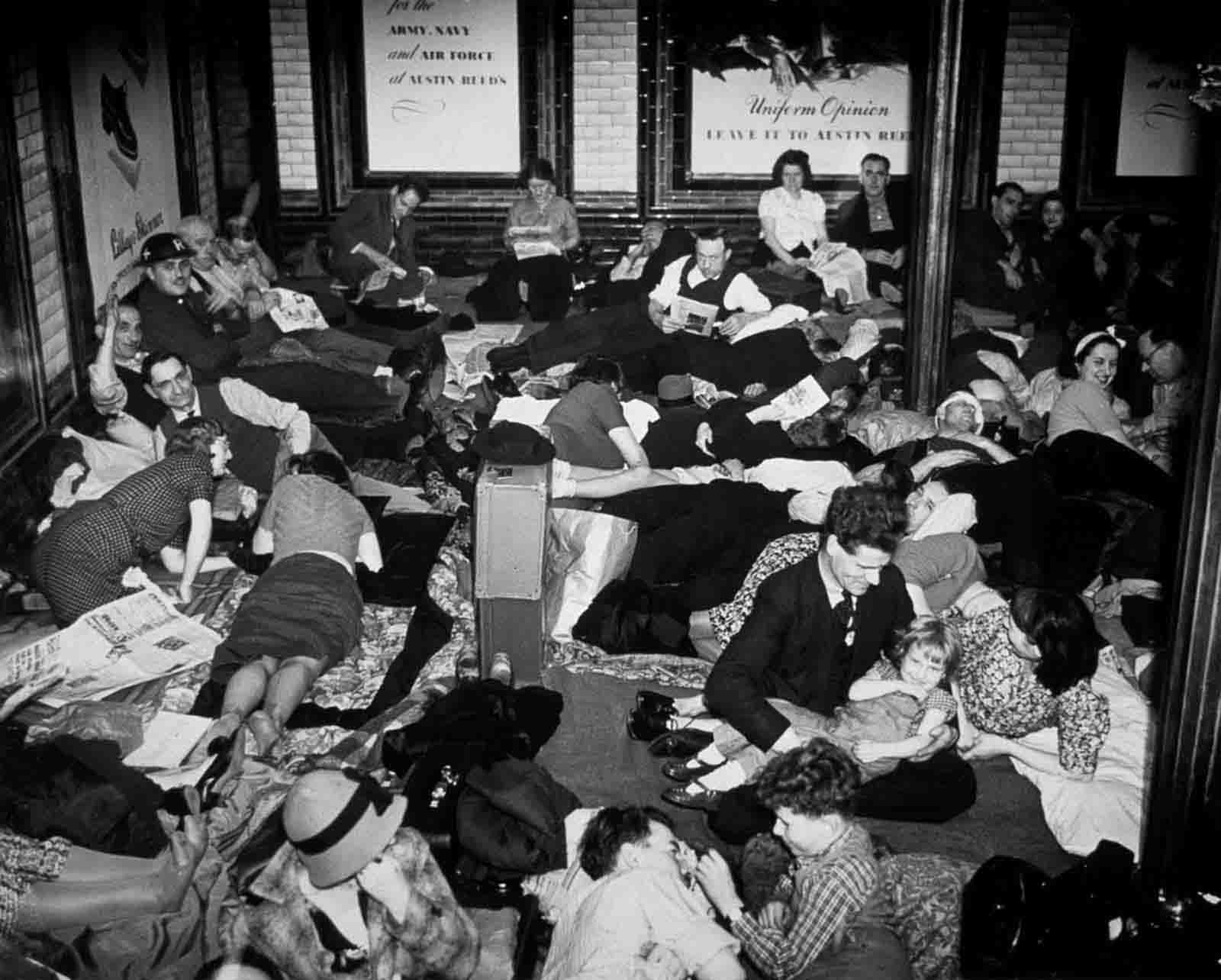
Londoners sheltering in the Underground during World War II, 1940-1941

Londoners sheltering in the Underground during World War II, 1940-1941

Londoners sheltering in the Underground during World War II, 1940-1941

Londoners sheltering in the Underground during World War II, 1940-1941
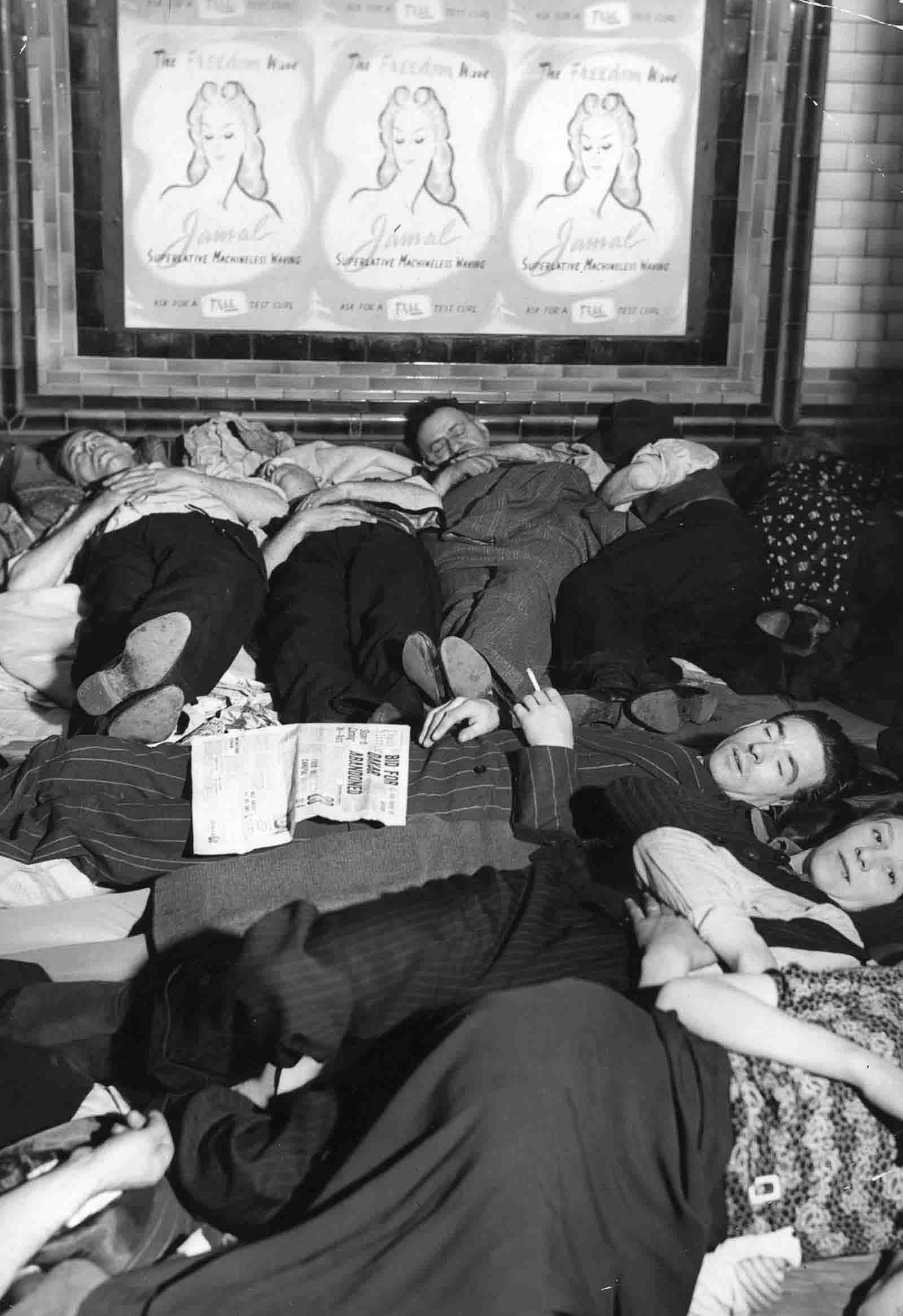
Londoners sheltering in the Underground during World War II, 1940-1941

Children sheltering in an underground station have their throats sprayed with disinfectant.
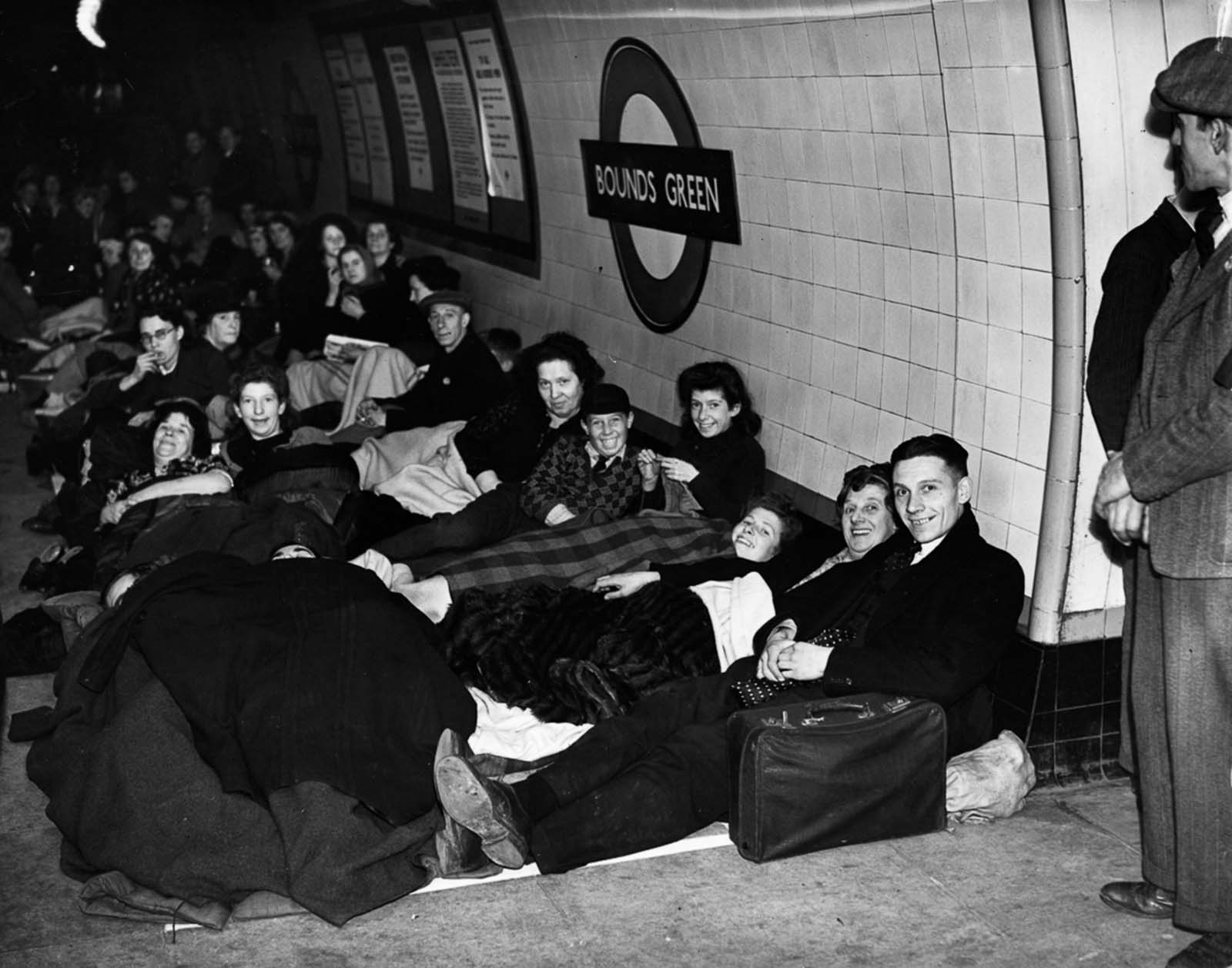
Londoners sheltering in the Underground during World War II, 1940-1941

Sir George Wilkinson, the Lord Mayor of London, and Lord Woolton, the Minister for Food, enjoy a cup of tea in an underground shelter.

Londoners sheltering in the Underground during World War II, 1940-1941

Londoners sheltering in the Underground during World War II, 1940-1941

Londoners sheltering in the Underground during World War II, 1940-1941
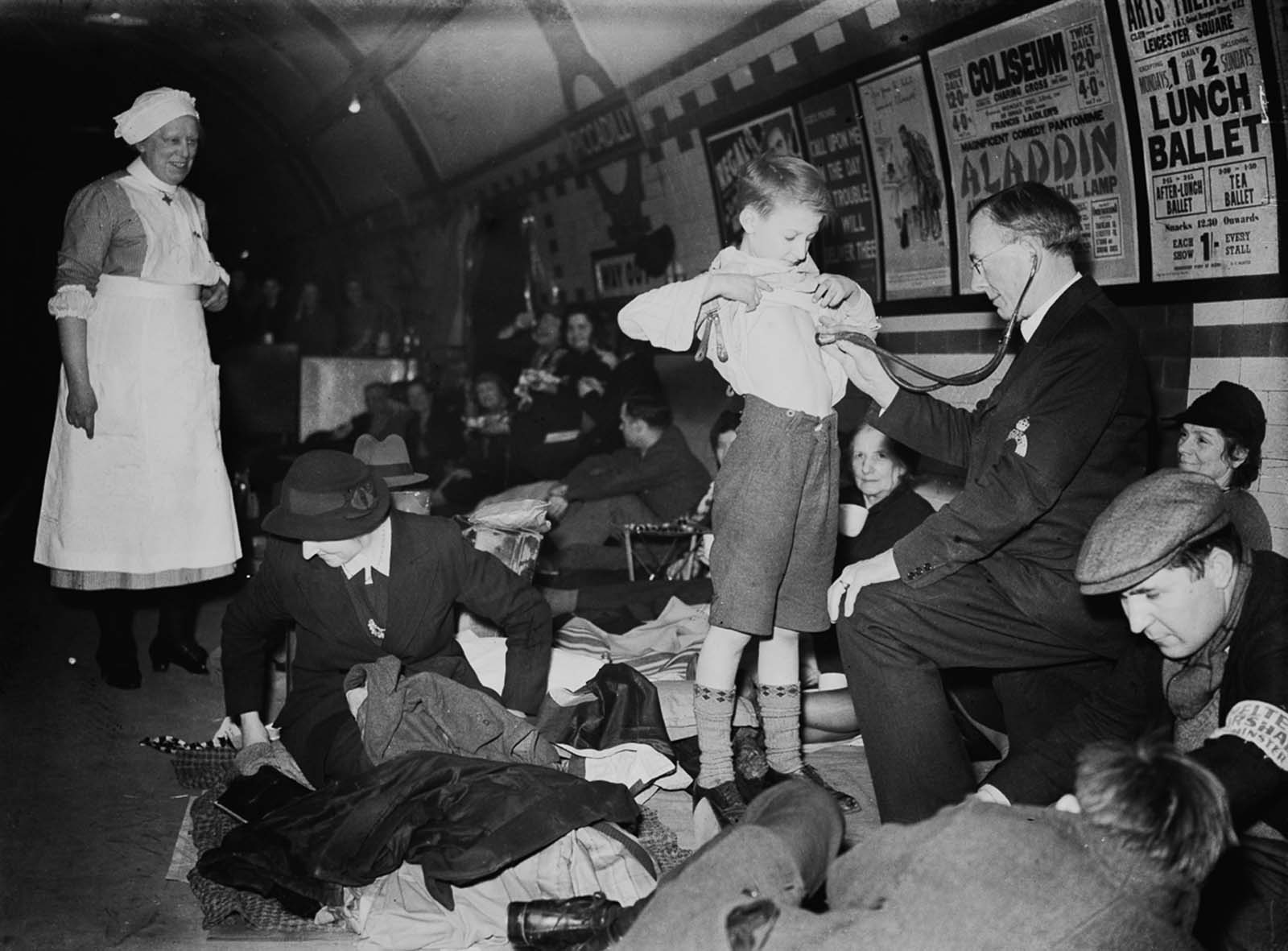
British Red Cross staff examine patients sheltering in Piccadilly station.

Londoners sheltering in the Underground during World War II, 1940-1941

Londoners sheltering in the Underground during World War II, 1940-1941
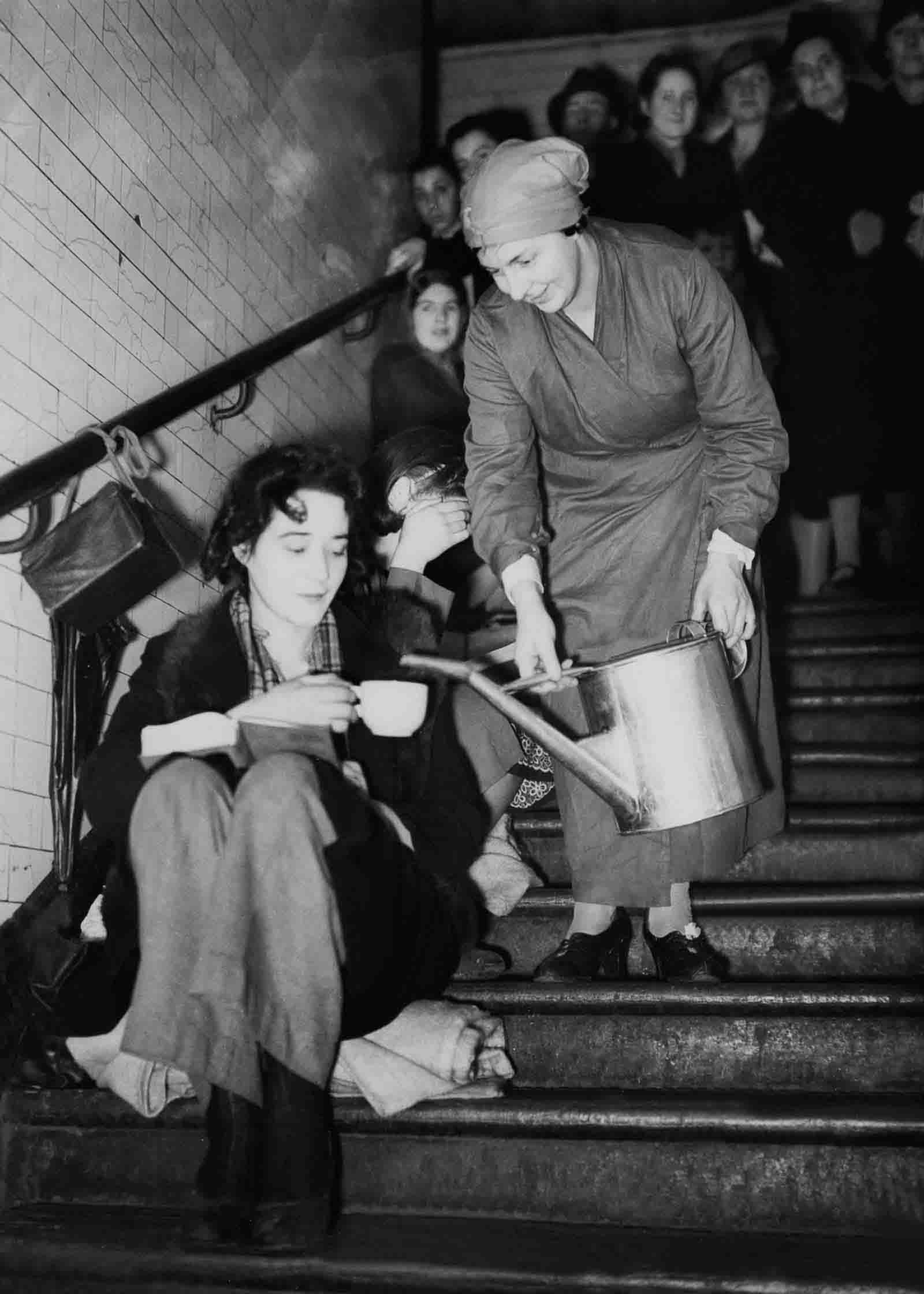
Londoners sheltering in the Underground during World War II, 1940-1941

Londoners sheltering in the Underground during World War II, 1940-1941
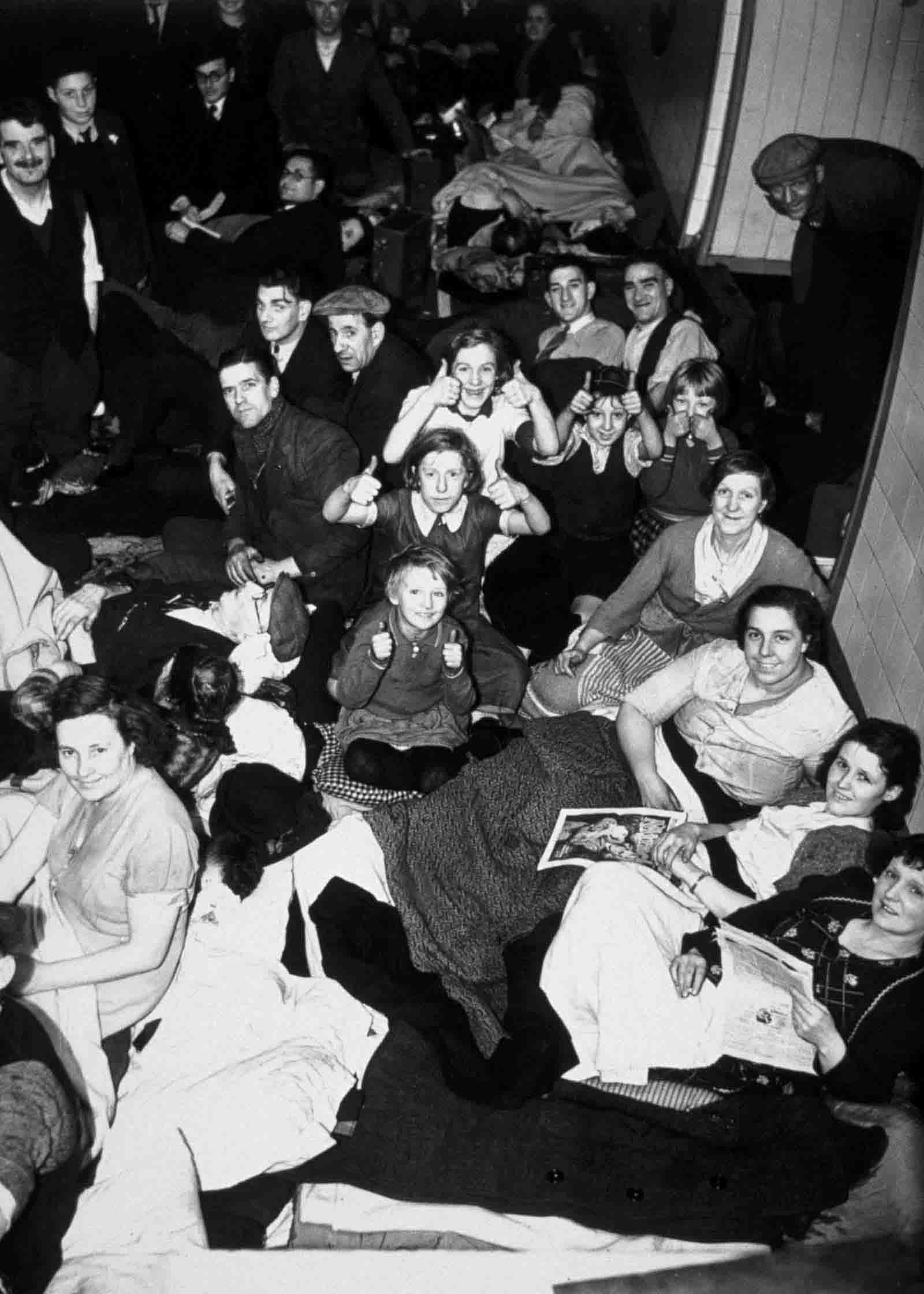
Londoners sheltering in the Underground during World War II, 1940-1941

Londoners sheltering in the Underground during World War II, 1940-1941
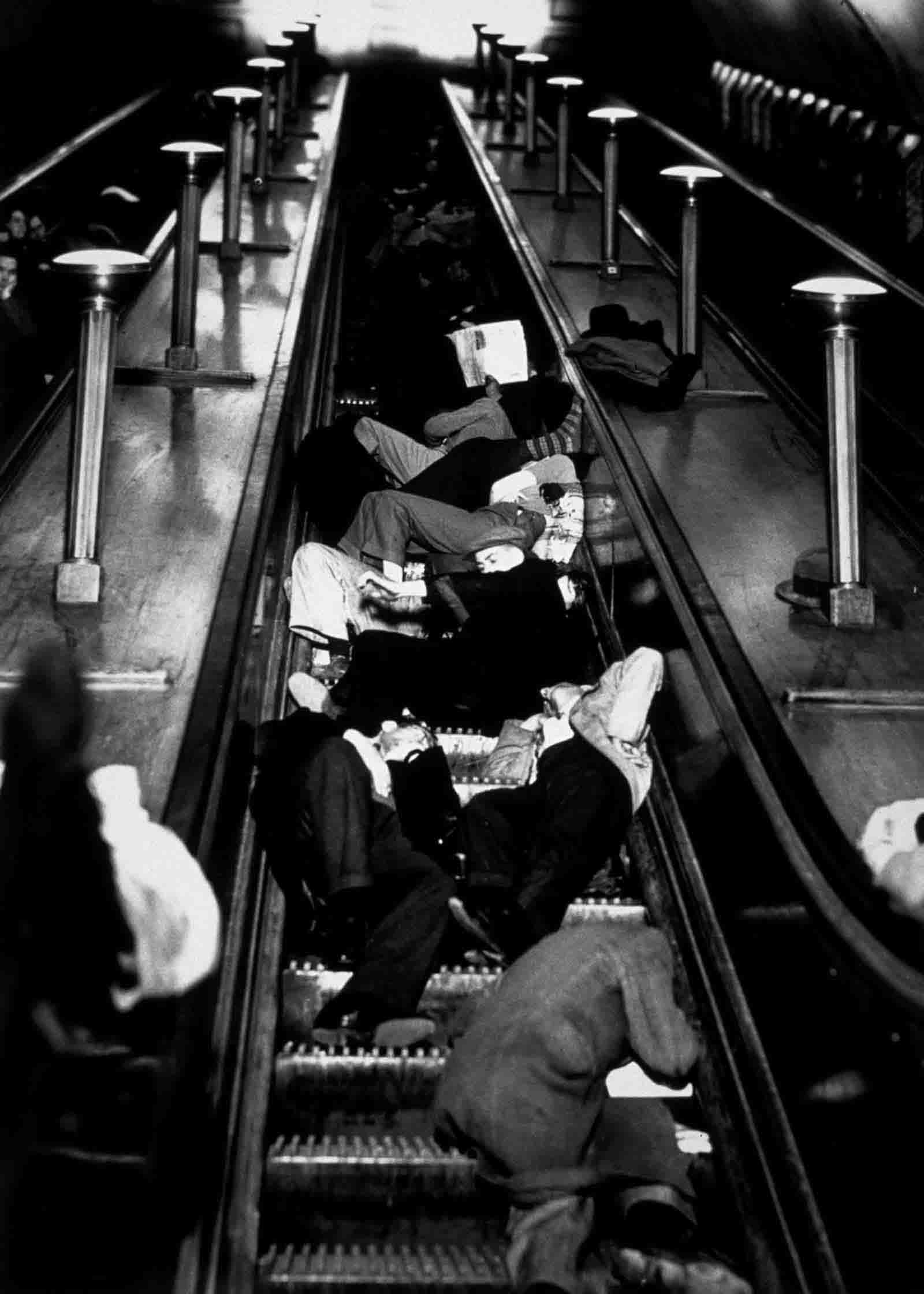
Londoners sheltering in the Underground during World War II, 1940-1941
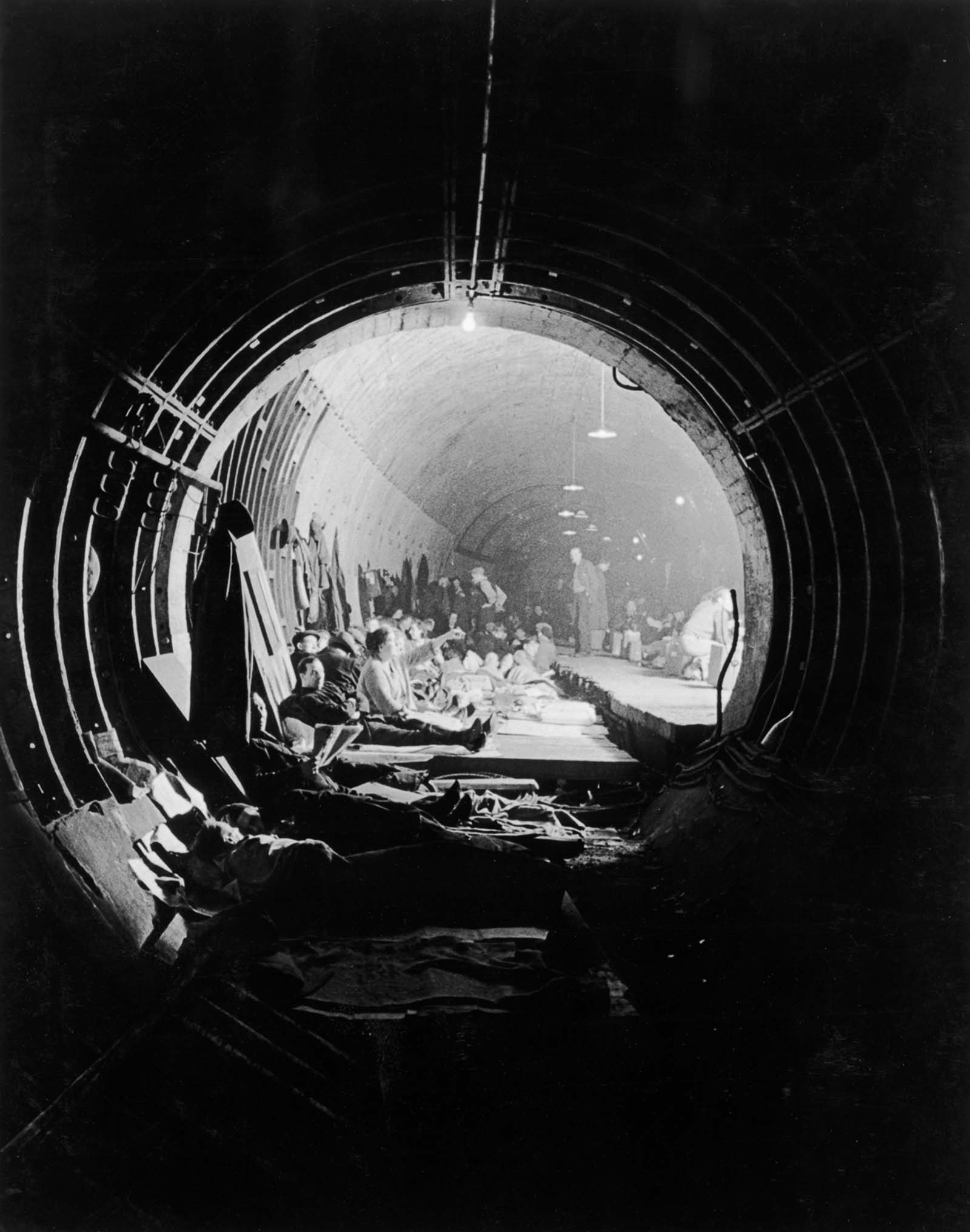
Londoners sheltering in the Underground during World War II, 1940-1941

The Storre Brothers, a pair of music hall artistes, entertain their companions underground.

Londoners sheltering in the Underground during World War II, 1940-1941
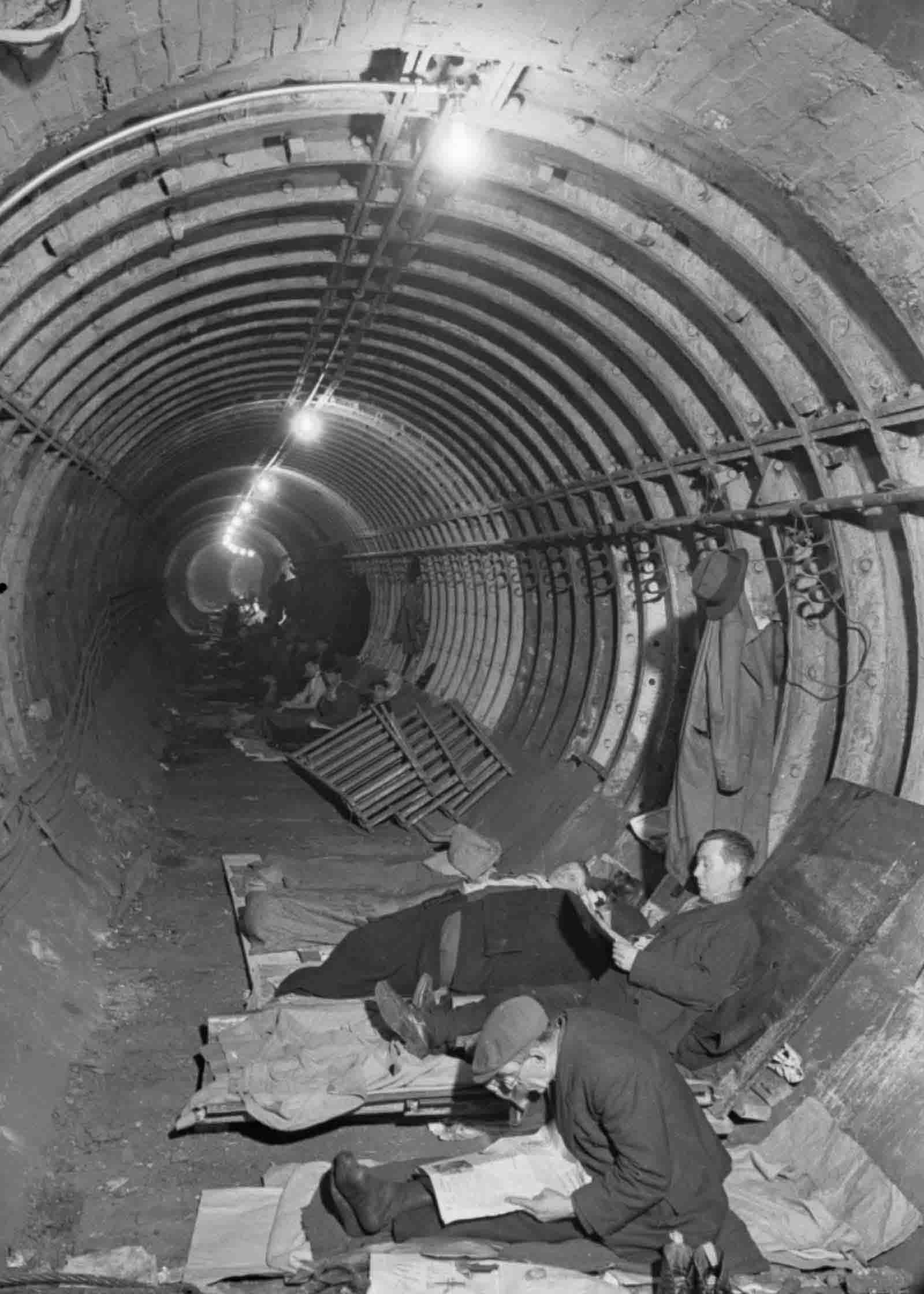
Londoners sheltering in the Underground during World War II, 1940-1941

(Photo credit: Wikimedia Commons / IWM / Universal History Archive / Ministry of Information Photo Division Photographer).
